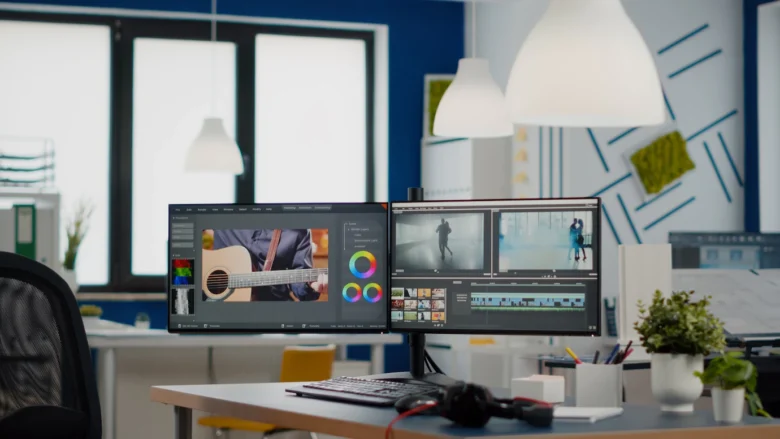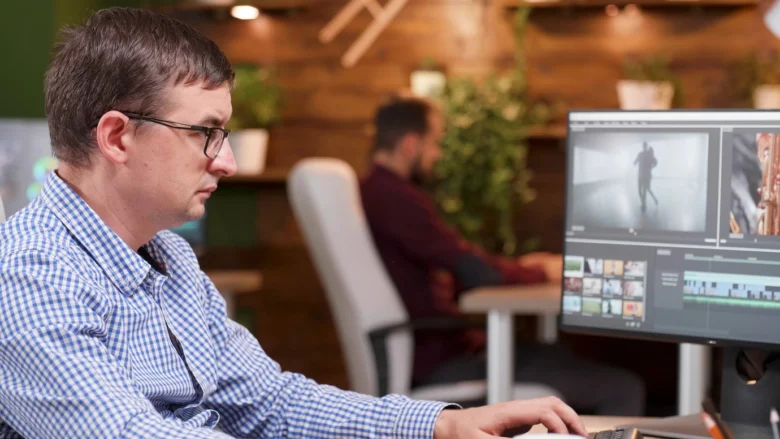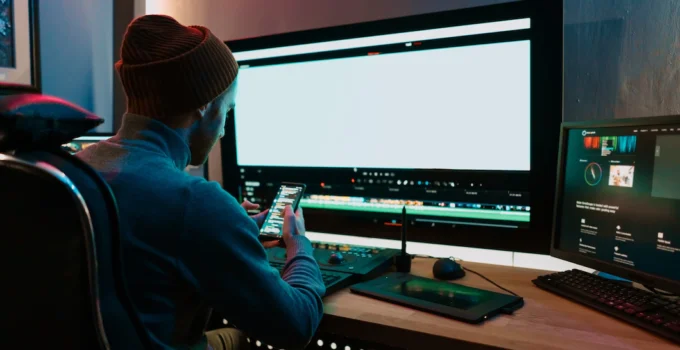Video editing is a tedious and time-consuming process, but the tools to do it are getting better and more accessible every day. Here’s a list of free video editing software that you can use to make your videos look their best.
Different types of video editing

Source: medium.com
Video editing is the process of manipulating and rearranging shots to create a new work. It can be used to correct errors, add special effects or simply improve the overall look of the video. There are many different types of editing, each with its own set of tools and techniques.
The most common type is linear video editing, which is what most people think of when they think of “editing” a video. Linear editing is done by stringing together individual shots in a sequence, much like how you would edit a film. This is typically done using non-linear editing software (NLE), which provides a timeline-based interface for arranging and trimming clips.
Another common type of editing is non-linear video editing, which allows for more flexibility and creativity. Non-linear editors (NLVEs) work by storing individual frames, or “clips”, in a database. This allows the editor to access any frame in the database at any time, making it easy to make changes or add effects without having to reassemble the entire sequence.
Motion graphics are another type of video edit that has become increasingly popular in recent years. Motion graphics are usually created using graphic design software such as Adobe
After Effects or Apple Motion. They often include animated text, images, or logos superimposed over background footage. Motion graphics can be used to create title sequences, lower thirds, or simply to add some visual interest to a sequence.
Finally, there is also a type of video editing known as “post-production”. This is usually done after the main editing process is complete and involves adding final touches such as color correction, audio mixing, and titling.
What tools do you need?

Source: freepik.com
If you want to start editing videos, you’ll need a few things first. A computer with enough processing power to handle editing, as well as video editing software.
There are a number of free and paid editors available. Some of the more popular ones include Adobe Premiere Pro, Apple Final Cut Pro X, and Avid Media Composer. If you’re just starting out, we recommend using a free program workintool.com
Once you have your editor picked out, you’ll need some footage to work with. If you don’t have any recorded yet, try shooting some with your smartphone or another camera. Once you have your footage, import it into your video editor.
Now you’re ready to start cutting and adding effects to your footage! Have fun and experiment with different techniques to find what works best for you.
The basics of editing a video

Source: freepik.com
The first step in editing a video is to select the footage you want to use. Most free editing tools will have a simple interface for this, allowing you to select the clips you want to use and arrange them in the order you want them to appear. Once you’ve selected your footage, it’s time to start adding your edits.
The most basic edit is the cut, which is simply removing a section of footage from your video. To do this, simply find the point in the clip where you want to make the cut and click on the “cut” button. The cut footage will be removed from your sequence and placed in your clipboard so that you can paste it elsewhere if needed.
If you want to get more creative with your edits, you can also add effects such as transitions, filters, and titles. These effects can help give your film a more polished look and can be added with just a few clicks. Again, most free tools will have simple interfaces for adding these kinds of edits.
Once you’re happy with your final product, it’s time to export it so that you can share it with others. Free editing tools will usually provide a variety of export options, including popular formats such as MP4 and WMV. Simply select the format you want to use and click on the “export” button. Your film will then be saved in the selected format and ready to share with the world.
The most common video formats

Source: freepik.com
There are so many video formats out there, it can be tough to keep track of them all. Whether you’re looking to create content for social media, your website, or another purpose, knowing which format to use is key.
MPEG-4
MPEG-4 is a digital format that is commonly used for encoding footage files. This format is typically used for storing and sharing files on the internet. MPEG-4 is a lossy compression format, which means that some of the original data in the file is lost when it is encoded in this format.
AVI
AVI (Audio Video Interleave) is a popular format that is widely used for watching clips on the internet. AVI files can be played on both Windows and Mac computers. AVI files are usually encoded using MPEG-4 or DivX codecs.
MOV
MOV is a container format developed by Apple and is a popular choice for storing video files. It is compatible with both Mac and Windows operating systems. MOV files can be played on QuickTime Player, VLC media player, and other media players that support the format.
WMV
WMV (Windows Media Video) is a format developed by Microsoft. It is designed to provide a high-quality video experience on a variety of devices, including PCs, tablets, and smartphones. WMV files are typically encoded using the Windows Media Video 9 codec, which provides a high level of compression.
WMV files can be played back in a number of different ways, including Windows Media Player, the Windows Media Center, and the Xbox 360 console. They can also be played on many mobile devices that support the format.
FLV
FLV is a popular format that is used by many websites and online platforms. FLV files are typically smaller in size than other formats, making them ideal for streaming over the internet. FLV files can be played on most computers and mobile devices.
Conclusion
Though it may seem challenging at first, editing videos is a skill that anyone can learn with a little practice. These free tools make it easy to get started, and before you know it, you’ll be creating professional-quality videos of your own. So what are you waiting for? Get out there and start editing.




